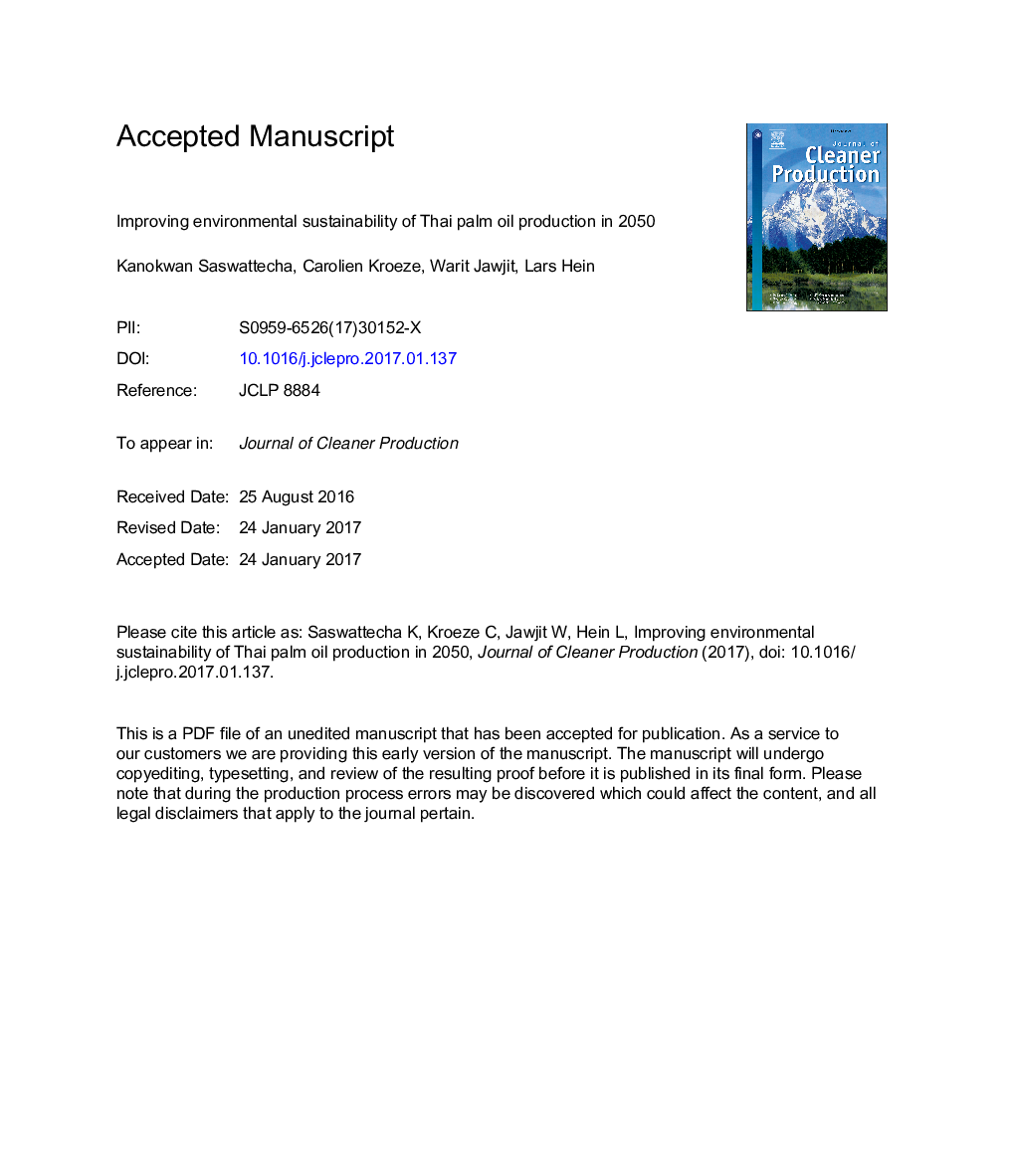| Article ID | Journal | Published Year | Pages | File Type |
|---|---|---|---|---|
| 5481504 | Journal of Cleaner Production | 2017 | 46 Pages |
Abstract
Palm oil production has increased in Thailand with considerable environmental impacts. The aim of this study is to analyse possibilities to examine how the environmental sustainability of Thai palm oil production can be improved in the coming decades. To this end, we integrated a sectoral and a landscape model in order to analyse scenarios for 2050. We do this with a focus on options to reduce (1) the effects of land-use-change on ecosystem services, and (2) the environmental impact of oil palm plantations and palm oil mills. Four future scenarios are developed; business-as-usual (BAU), current-policy (CP), strong-growth (GRT) and green-development (GRN). The BAU scenario indicates that environmental impacts may double without additional improvement options. The CP scenario shows that current plans to increase palm oil production would considerably increase environmental impacts. Implementing only cost-effective options, as in the GRT scenario, is also not enough to avoid an increase in environmental impacts if the export of palm oil increases faster than currently envisaged. The GRN scenario assumes implementation of a combination of effective options, regardless of their costs. This would considerably reduce environmental impacts. Thus it is technically possible to improve environmental performance of palm oil production in Thailand.
Related Topics
Physical Sciences and Engineering
Energy
Renewable Energy, Sustainability and the Environment
Authors
Kanokwan Saswattecha, Carolien Kroeze, Warit Jawjit, Lars Hein,
